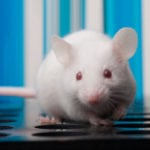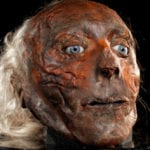 Politics
Politics  Politics
Politics  Weird Stuff
Weird Stuff 10 Eggs-traordinarily Odd Eggs
 History
History 10 Desperate Last Stands That Ended in Victory
 Animals
Animals Ten Times It Rained Animals (Yes, Animals)
 Mysteries
Mysteries 10 Devastating Missing Child Cases That Remain Unsolved
 Creepy
Creepy 10 Scary Tales from the Middle Ages That’ll Keep You up at Night
 Humans
Humans 10 One-of-a-kind People the World Said Goodbye to in July 2024
 Movies and TV
Movies and TV 10 Holiday Movies Released at Odd Times of the Year
 Politics
Politics 10 Countries Where Religion and Politics Are Inseparable
 Weird Stuff
Weird Stuff 10 Freaky Times When Famous Body Parts Were Stolen
 Politics
Politics The 10 Most Bizarre Presidential Elections in Human History
 Weird Stuff
Weird Stuff 10 Eggs-traordinarily Odd Eggs
 History
History 10 Desperate Last Stands That Ended in Victory
Who's Behind Listverse?

Jamie Frater
Head Editor
Jamie founded Listverse due to an insatiable desire to share fascinating, obscure, and bizarre facts. He has been a guest speaker on numerous national radio and television stations and is a five time published author.
More About Us Animals
Animals Ten Times It Rained Animals (Yes, Animals)
 Mysteries
Mysteries 10 Devastating Missing Child Cases That Remain Unsolved
 Creepy
Creepy 10 Scary Tales from the Middle Ages That’ll Keep You up at Night
 Humans
Humans 10 One-of-a-kind People the World Said Goodbye to in July 2024
 Movies and TV
Movies and TV 10 Holiday Movies Released at Odd Times of the Year
 Politics
Politics 10 Countries Where Religion and Politics Are Inseparable
 Weird Stuff
Weird Stuff 10 Freaky Times When Famous Body Parts Were Stolen
10 Human Attributes Explained By Evolution
Humans are a somewhat peculiar species, with unusual distinguishing characteristics. In this evolutionary account, we examine the fascinating origins behind perplexing, incredible or highly valued human adaptations. We will explore why we blush, how our “advanced” body form stem from delayed maturation, and the origin of the human chin.

We have all seen it in action movies, or felt it ourselves when confronting that dreadfully annoying person who damaged our reputation through gossip. When angry, humans may experience twitching of the upper lip edges, with the edges rising a millimeter up. Lip twitching is not so much a minor reflex, but an evolutionary leftover that reveals the more beastly elements of human heritage. Lip twitching is the first part of baring teeth and growling at an intruder, and is seen in wolves, bears and chimpanzees. In humans, lip twitching is a sign that although “civilized”, humans are still not anywhere near “tame”.
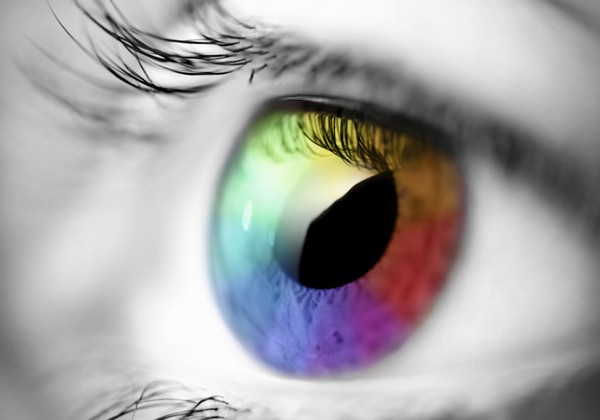
As a diurnal species, Humans are rare among mammals in possessing color vision, which is a trait mostly unique to day-going birds, fish and reptiles, compared to the mostly nocturnal mammals. It was long though that humans developed color vision in order to better locate and select appropriate food items, but recent studies suggest that color vision is related to our lack of body hair. Our facial “nudity” exposes the blood flow based skin colors linked to our emotions, which is visible on our face and upper body. However, such signals require color vision to correctly perceive. Early humans who developed color vision were at an advantage due to their ability to more rapidly size up other humans and either avoid deadly fights, or take advantage of mating opportunities.

We have heard the phrase “and not a hair of your head will be harmed. The question is, why would a primate possess a head covered in hair, and not the rest of the body? The overwhelming scientific consensus indicates that humans lost their hair to remain cool, but retained head hair due to its extremely valuable insulating and heat repelling properties. An upright biped in savanna habitats might end up without fur, but lacking hair on the head could result in serious sunburns. Ironically, humans are not as well adapted to farming as for hunting, as agriculture requires workers to bend over, exposing the hairless back. The ancestral human, however, would have run after animals and gathered foods from trees on foot, bending only briefly to collect plants, nest materials and small animal prey.

The Chin is rarely thought of as a defining human trait, but we are the only primate species that possesses a true chin. As humans became more “advanced”, with larger brains and greater dexterity, we were able to leave behind more primitive foods such as bony bony chunks of meat and fibrous roots in favor of more delicate fare. Co-occurring with our larger brains were smaller jaws. Scientists have theorized that humans developed the chin as a sort of buttress to brace the jaw and allow it to retain strength while becoming relatively much smaller. Sexual selection is also believed to have played a role, with good jawlines being a signal of strength.
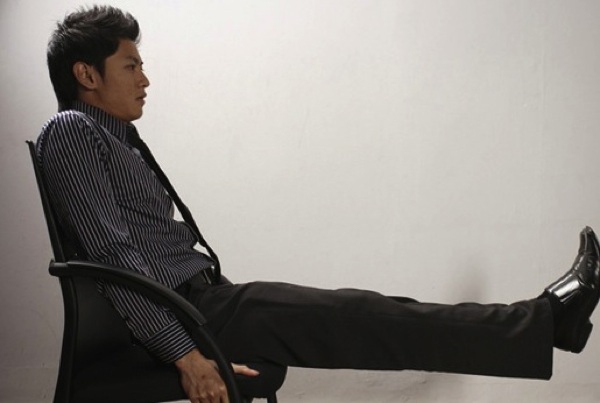
When watching a scary movie, or when experiencing anxiety, some people may experience the urge to lift their feet or climb to a more elevated position. This activity could be thought of as a senseless displacement behavior or other nervous reaction. However, a look at primate biology makes this behavior much more understandable. Most predators that pose a threat to primates are ground dwelling, and as a result, many species will climb trees when threatened. Lifting feet is thus a leftover instinct that tells people a threat is present that warrants climbing out of range.

The lack of hair in humans is a trait that has long puzzled evolutionary biologists, but it may also be one of the more readily explainable. Living in a hot, open Savannah environment while actively running on two legs is believed to have favored a finer coat that would allow humans to sweat freely and avoid overheating in the sun bathed grasslands. As a result of walking upright, humans were less exposed to the sun, which prevented the back from being burned. The benefit of rapid cooling outweighed the costs of heat or even moderate cold exposure. Interestingly, humans became naked through thinning of hairs, and not a reduction in follicle numbers. Humans have not re-evolved hair as intelligence allowed creation of clothing, preventing the action of further selection.

Walking on two legs is one of man’s most defining, yet taken for granted characteristics. It is also one of the widely disputed human adaptations. Scientists have developed several interesting theories on the origin of bipedalism, which are likely complementary rather than opposing. We would be likely to conclude that human movement out of forests and into grassland regions, the ability to stand upright highly useful as a means to scan the long distances for potential meals and threats. In addition, standing upright compensates for a lack of trees to climb for perspective. As humans further evolved, use of the arms became useful for spear hunting, which has also developed in Chimpanzees. Carrying the extremely helpless human infants also become easier as a biped.
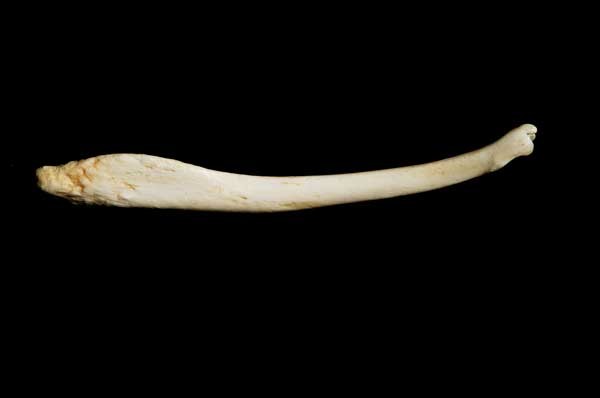
In the sexual evolution of social species, a variety of indicators such as antlers have evolved to showcase the fitness of an individual to reproduce. For most mammals, including our close relative, the Chimpanzee, the penis is simply a practical reproductive organ. However, in humans, the penis has become a fitness indicator, and has evolved through sexual selection to become much longer relative to body size as a result of sexual selection for appearance. The human penis is not only larger, but unlike most mammals, lacks a penile bone, or baculum. The mystery was solved when scientists arrived at the conclusions that achieving an erection has become a signal of health and reproductive fitness, but it would not be relevant indicator were a bone present to make them constant. Lacking a bone also allows the penis to shrink back down to a smaller size, preventing it from becoming a liability.

Humans are perceived as an advanced species, but how many times have we stopped to consider that we owe this to evolutionary selection “brakes” on age development? Scientific research indicates that some of our most important human characteristics such as our large heads, which lend us our high intelligence, actually stem from retention of juvenile characteristics. The rounded features of human faces with “beautiful” features of many human females and “handsome” male traits also originate from selection pressure for this effect, known as “neotony”. The most remarkable case of neotony in other species is the Axolotl salamander, which is a subspecies of Tiger Salamander that remains a tadpole for its entire life.

The human species may be adept at deception and hiding of emotions, but strangely, evolutionary processes actually favor more “honest” signals in many instances. Just as crest feather displays have evolved to accurately signal the intentions of birds, reducing the need for actual disputes, human skin color changes serves to indicate mood. Confronted with an uncomfortable situation, we may make our best effort to deceive, but unfortunately for us, centuries of socially driven evolution may be giving us away. Scientific studies have shown that blushing serves to mitigate hostile responses by communicating that the subject is ashamed or apologetic. In a series of tests, sympathy was elicited in the majority of test subjects when the illicit individual blushed, compared to those who were icy cool.
Ron Harlan investigates of the mysteries of nature and the bizarre findings that often crop up on this planet. He is a freelance writer and student of science.







